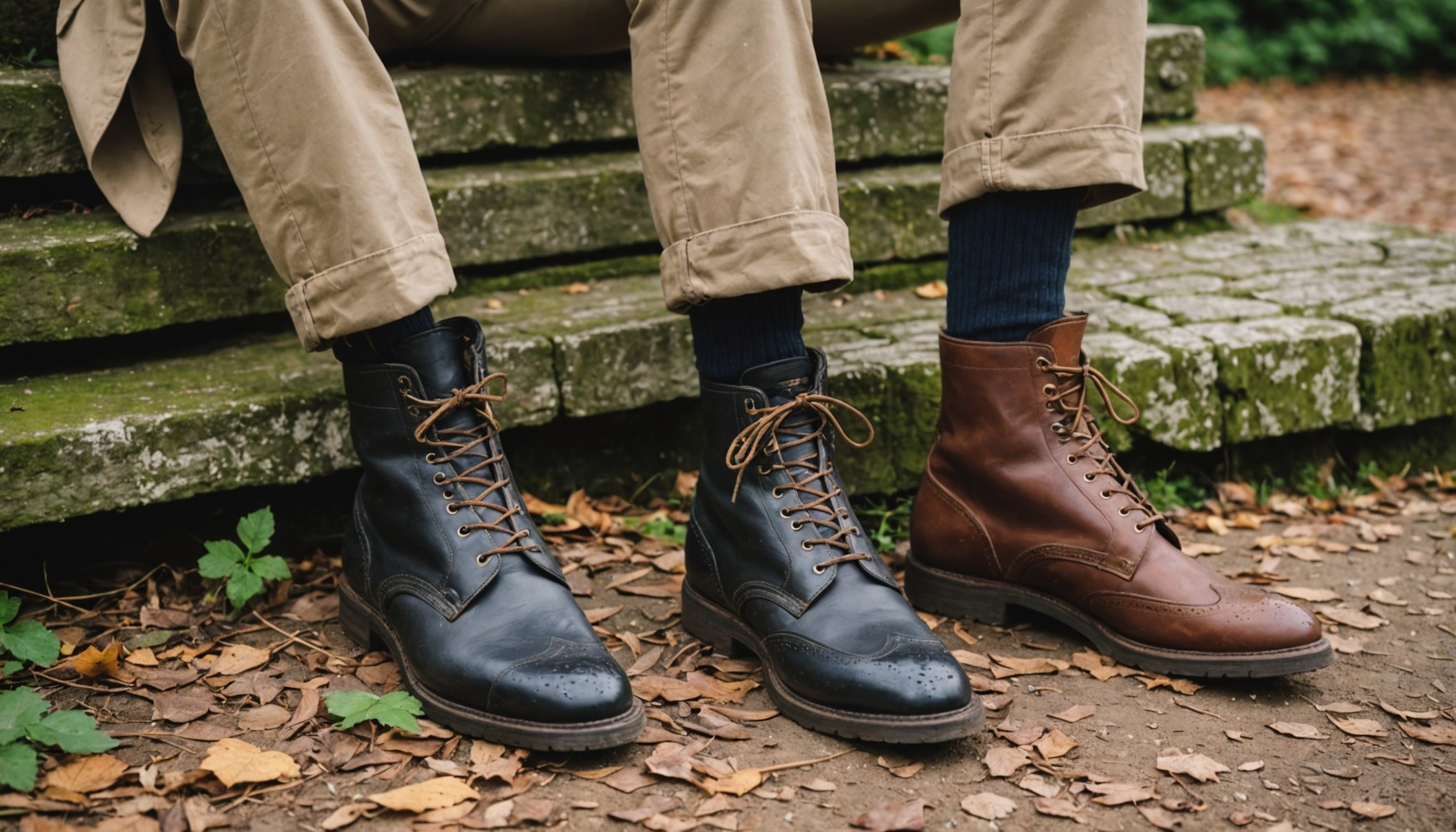Importance of Proper Footwear for Historical Site Exploration
Exploring historical sites is not only enlightening but also physically demanding, especially when wandering through aged terrains or lengthy paths. Wearing the appropriate footwear for historical exploration can significantly shape the visitor’s overall experience. Walking across cobblestones, uneven grounds, or long distances requires shoes that offer comfort and support, preventing fatigue and discomfort which could overshadow the enjoyment of the trip.
Durability and weather resistance are crucial features in such footwear. Rain, mud, and varied temperatures are common hurdles when visiting outdoor sites, and shoes with durable materials and waterproof qualities keep feet dry and shielded, ensuring prolonged exploration opportunities.
Also to see : Transform your style: chic midi skirt outfit ideas for fashionable living in sheffield
Choosing the right shoes can enhance visits to historical sites. Sturdy shoes with good traction help maintain safety, reducing the risk of slips or falls. Furthermore, well-ventilated footwear ensures feet remain comfortable, especially during warmer periods, allowing explorers to focus on the captivating history before them. Integrating these elements ensures that the footwear not only serves functionally but also enriches the historic journey, keeping comfort and adventurous spirit alive.
Best Footwear Picks for Exploring the UK’s Hidden Historical Gems
Embarking on an exploration of the UK’s hidden historical gems requires the right footwear. Choosing the best footwear for exploration ensures comfort and safety while roaming historical sites.
Also to read : Explore the best british brands pioneering organic cotton loungewear: your ultimate guide
Trail Running Shoes
Trail running shoes offer superb comfort and flexibility across varied terrains. Their design includes enhanced grip, ensuring stability on slippery paths, while water resistance protects against unexpected weather changes. Models such as the Salomon Speedcross 5 and Saucony Peregrine 11 are ideal choices, providing both durability and protection for exploring rugged historical paths.
Lightweight Hiking Boots
For more uneven landscapes, lightweight hiking boots provide essential ankle support, reducing the risk of injuries. Their breathability and waterproof qualities keep feet dry and comfortable. The Merrell Moab 2 and Columbia Newton Ridge Plus II are top-rated options that suit visits to more towering historical sites.
Comfortable Walking Shoes
Long walks around urban historical locations demand shoes with substantial cushioning. Options like the New Balance 990 and Nike Air Max are not only stylish but also offer versatility for various types of explorations, making them a staple for any traveller.
Sandals for Warm Weather Adventures
On balmy days, sandals with breathable materials are key. Featuring arch support, styles like Teva Hurricane XLT2 and ECCO Yucatan secure comfort through extended wear while handling diverse terrains with ease.
Tips for Pairing Footwear with Various Terrains
Navigating different terrains while exploring historical sites demands careful pairing of footwear. Understanding terrain types ensures comfort and safety throughout your journey.
Types of Terrains
Historical sites often present a variety of terrains. Muddy paths are common, especially around archaeological digs. Gravel can be challenging, frequently seen in older fortifications or exterior footpaths. Urban settings, such as city tours, offer smoother terrains but still demand the right footwear.
Footwear Recommendations
When navigating muddy terrains, opt for waterproof boots with robust tread to prevent slipping. Shoes with excellent traction are crucial for gravel paths, reducing the risk of sliding. For urban tours, consider lightweight sneakers, offering both comfort and practicality.
Additionally, don’t underestimate the importance of moisture-wicking socks. They enhance comfort by keeping feet dry, even when exploring for long hours. These socks drastically reduce the risk of blisters, often exacerbated by moisture and friction.
Additional Considerations
Beyond specific tasks, always consider the weather conditions when selecting your footwear. Wet weather requires more waterproofing solutions, while hot days may call for lighter materials. The key is consistent comfort and appropriateness for the terrain tackled, ensuring an enjoyable exploration experience.
Recommended Hidden Historical Sites in the UK
Discover some of the UK’s hidden treasures by exploring unique historical sites that aren’t as commonly known. These sites offer a fascinating glimpse into the past and promise to enrich your travels with their unexpected beauty and cultural significance.
Lesser-Known Castles
Among the hidden historical sites in the UK, seldom-visited castles provide a unique experience. Explore Llansteffan Castle in Wales, perched on a hill offering stunning estuary views. It’s a treat for history buffs and nature lovers alike, but its grassy terrain suggests sturdy walking shoes to navigate the slopes. Another gem is Kisimul Castle on the Isle of Barra, accessible only by boat – a journey sure to enhance the adventure. Here, waterproof footwear is advisable, given its oceanic environment.
Ancient Ruins and Earthworks
The UK is dotted with ancient ruins like the Druids’ Temple in North Yorkshire, a peculiar site with a mysterious aura. This spot requires trekking shoes to accommodate the rugged terrain surrounding it. Alternatively, explore the ancient Dunadd Fort with its spectacular landscapes; comfortable hiking boots are recommended as the approach involves rocky paths.
Unique Museums and Heritage Sites
Visit the Time and Tide Museum in Great Yarmouth, revealing the story of the UK’s maritime past. While urban and easily accessible, comfortable footwear is still advised to ensure enjoyment as you wander through exhibits that speak of the region’s storied history.











